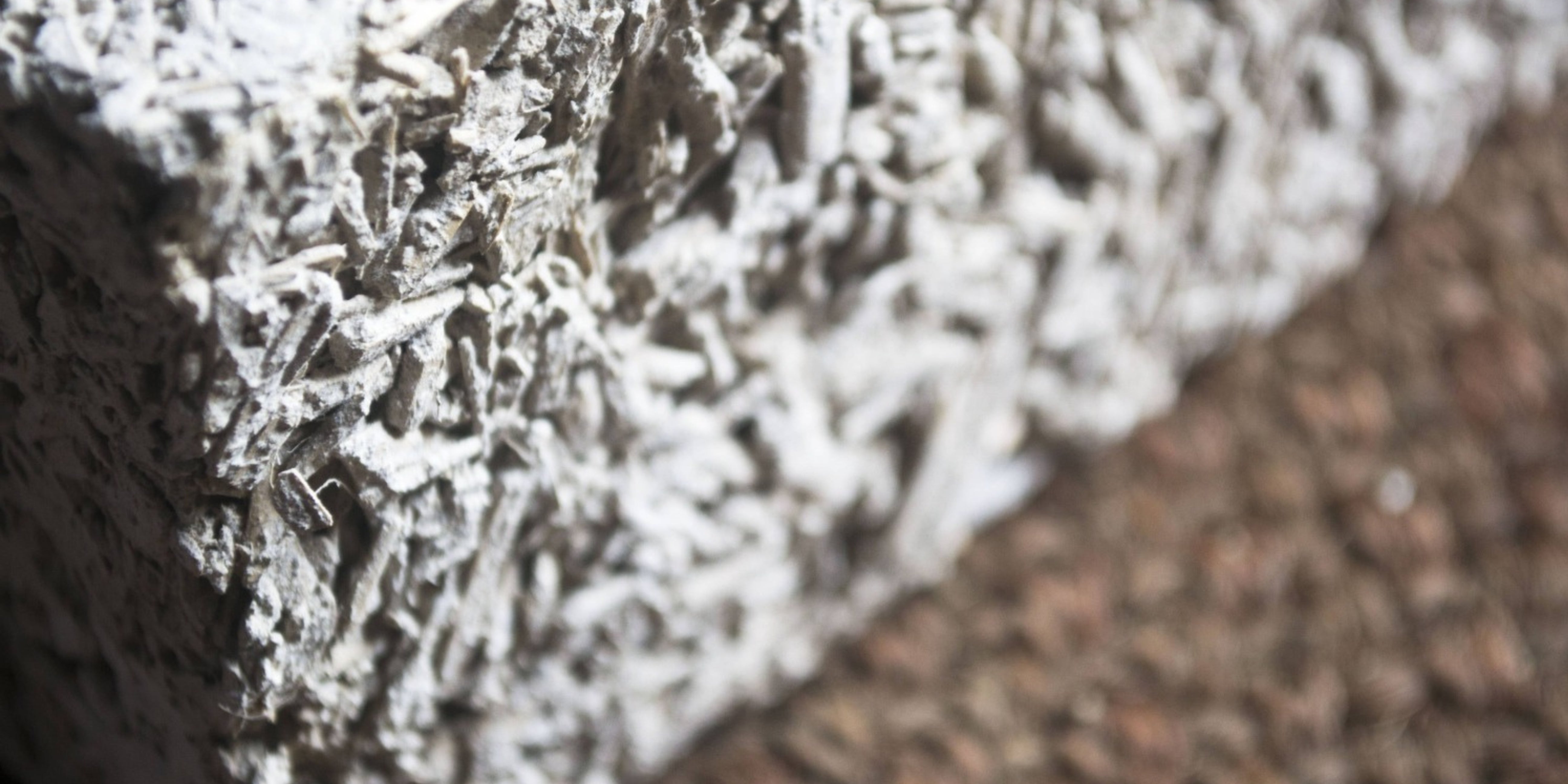Hempcrete: The Sustainable Building Material of the Future
As the world searches for sustainable solutions to counter the environmental crisis, the construction industry is increasingly adopting innovative materials. One of these materials, hempcrete, is attracting interest for its remarkable properties and potential to revolutionise construction. Derived from the hemp plant, hempcrete could very well be the sustainable building material of the future.
Building a Greener Future: Introducing Hempcrete as a Sustainable Alternative
The conventional building materials, such as concrete and bricks, come with significant environmental costs. Cement production, for instance, contributes to around 8% of global CO2 emissions. The industry's enormous carbon footprint calls for the introduction of greener alternatives. This is where hempcrete comes in.
Hempcrete is a bio-composite material made from the woody core of the hemp plant, known as the hurd, mixed with a lime-based binder. Unlike conventional materials, hempcrete is renewable, biodegradable, and has a low carbon footprint. The hemp plant absorbs CO2 as it grows, making it a carbon-negative raw material.
The lime binder also has a smaller environmental impact compared to cement, further reducing hempcrete’s carbon footprint. Lime is sourced from limestone, which is abundant worldwide, while cement involves more energy-intensive production. Besides, lime reabsorbs CO2 during the curing process, making the overall manufacture of hempcrete carbon-negative.
Yet, one of the challenges with hempcrete is that it requires a shift in conventional construction practices. Hempcrete is not load-bearing and needs to be used in conjunction with a frame, which could increase construction time and costs. Furthermore, sourcing large amounts of hemp for commercial-scale projects may pose supply chain difficulties in regions where its cultivation is restricted.
The Power of Hemp: How Hempcrete Reduces Environmental Impact
The environmental benefits of hempcrete go beyond its carbon-negative properties. It is also a potent tool for waste reduction. Construction and demolition waste constitutes a significant part of global solid waste. Hempcrete can help mitigate this problem as it is recyclable and biodegradable. Old hempcrete buildings can be demolished and the material returned to the soil as a nutrient-rich compost, or it can be reused in new constructions.
Moreover, hemp cultivation has a positive impact on soil health. Hemp is a fast-growing crop, and its dense growth prevents weed proliferation, reducing the need for herbicides. Its deep root system also improves soil structure and prevents erosion. This means that cultivating hemp for hempcrete not only provides a sustainable building material but also contributes to sustainable agriculture practices.
On the flip side, it's important to note that while hemp cultivation has many benefits, it's not without challenges. Hemp farming requires a specific climate and soil conditions, which may limit its growth to certain regions. It also demands skilled farmers familiar with its cultivation techniques, which could pose a barrier to scaling up production.
Redefining Construction: Exploring the Advantages of Hempcrete
In addition to its environmental benefits, hempcrete offers various advantages that can redefine the construction process. One of its key benefits is its thermal insulation properties. Hempcrete has an excellent insulation value, and buildings made from hempcrete require less energy for heating and cooling, leading to lower energy costs.
Furthermore, hempcrete is moisture-absorbing, which helps regulate indoor humidity levels. This attribute can improve indoor air quality and reduce the risk of mold and mildew. These properties, combined with hempcrete's ability to absorb and release moisture, make it ideal for creating healthier and more comfortable living spaces.
However, while hempcrete's thermal and moisture-absorbing properties are beneficial, it is crucial to properly design and install hempcrete walls to prevent potential issues. If not correctly installed, moisture absorbed by hempcrete can potentially lead to structural problems.
From Farm to Foundation: Understanding the Life Cycle of Hempcrete
Hempcrete's life cycle begins with the cultivation of hemp. The crop is harvested, and the woody core, or the hurd, is separated from the rest of the plant. The hurd is then mixed with a lime-based binder to create hempcrete.
The life cycle of hempcrete presents an advantage over conventional building materials. It is renewable, with the growth cycle of hemp being just a few months. Furthermore, hempcrete buildings have a long lifespan, and at the end of their life, the hempcrete can be recycled or composted, creating a closed-loop system.
However, the life cycle of hempcrete also presents challenges. The process of separating the hurd from the rest of the hemp plant can be labor-intensive and time-consuming. Additionally, while the hemp plant grows quickly, scaling up production to meet the demand for large-scale construction projects could be challenging.
Energy Efficiency in Action: How Hempcrete Keeps Your Home Comfortable
Hempcrete's excellent thermal insulation properties mean that it keeps buildings warm in the winter and cool in the summer. This reduces the need for artificial heating and cooling, leading to significant energy savings.
Furthermore, hempcrete's ability to absorb and release moisture helps to regulate indoor humidity levels, creating a comfortable living environment. It also contributes to a healthier indoor environment by reducing the risk of mold and mildew.
While hempcrete's energy efficiency is a major benefit, it's important to remember that the effectiveness of hempcrete insulation depends on the quality of the installation. Poorly installed hempcrete may not provide the desired energy savings, highlighting the need for skilled labor in hempcrete construction.
Healthier Living Spaces: The Benefits of Hempcrete for Indoor Air Quality
Indoor air quality is a critical factor in human health. Many building materials, including conventional insulation, can emit harmful substances that negatively impact indoor air quality. Hempcrete, on the other hand, is a natural material that does not emit harmful volatile organic compounds (VOCs).
Moreover, hempcrete's ability to absorb and release moisture can help prevent the growth of mold and mildew, which can cause health problems.
Yet, while hempcrete contributes to healthier indoor environments, it's important to note that other construction and interior materials used alongside hempcrete also need to be non-toxic to maintain good indoor air quality.
Resilient and Durable: Hempcrete's Strength as a Building Material
While hempcrete is not a load-bearing material, it is highly durable and resilient. It is resistant to pests and rodents and has a high fire resistance rating. In addition, it is highly resistant to mold and mildew due to its moisture-absorbing properties.
However, hempcrete does have some limitations. Its low structural strength means it must be used in combination with other materials for load-bearing purposes. This can increase the complexity of building design and construction.
Design Flexibility: Unleashing Creativity with Hempcrete
Hempcrete is a versatile material that can be used in various applications, from wall infill to floor slabs and roof insulation. It can be cast on-site or pre-fabricated, offering flexibility in design and construction.
Hempcrete can be molded into various shapes and sizes, unleashing creative possibilities for architects and builders. It can also be finished with a range of materials, including lime render, clay, or plaster, allowing for a variety of aesthetic finishes.
However, the use of hempcrete does require expertise in its specific handling and application techniques. Without proper knowledge and training, the application of hempcrete can lead to issues like poor insulation or moisture problems.
Carbon Capture and Storage: Hempcrete's Role in Mitigating Climate Change
By absorbing CO2 as it grows, hemp effectively captures carbon from the atmosphere. When this plant is used to make hempcrete, the carbon remains locked within the structure of the building for its lifespan, effectively making the building a carbon storage unit. This process, known as carbon sequestration, is a powerful tool in the fight against climate change.
In addition, the lime used in hempcrete reabsorbs CO2 during the curing process, further enhancing the material's carbon-negative properties. By replacing more carbon-intensive building materials like concrete and bricks with hempcrete, the construction industry can significantly reduce its carbon emissions.
However, it's important to remember that while hempcrete has strong carbon capturing capabilities, it doesn't solve all climate-related issues. The transport of materials, the energy used in construction, and other factors can still contribute to a building's overall carbon footprint.
Driving Sustainability Forward: Embracing Hempcrete for a Brighter Future
Hempcrete presents a viable and sustainable alternative to traditional building materials, offering environmental, health, and energy efficiency benefits. Its use can help drive sustainability forward in the construction industry, contributing to a greener and brighter future.
Embracing hempcrete on a larger scale requires overcoming several challenges, including supply chain issues, regulatory hurdles, and the need for more skilled labor familiar with hempcrete construction. It also requires a shift in mindset within the construction industry and among consumers, emphasising the importance of sustainability over short-term costs.
Despite these challenges, the growing awareness of the need for sustainable solutions, coupled with technological advancements, suggests a promising future for hempcrete. As the world continues to grapple with the environmental crisis, innovative, sustainable solutions like hempcrete will become increasingly vital.
Hempcrete, the sustainable building material of the future, offers an exciting possibility for those seeking to balance the need for durable, effective building materials with the imperative to reduce our environmental impact. As we continue to innovate and refine our building practices, it's clear that materials like hempcrete will play a pivotal role in shaping a more sustainable world.
In conclusion, hempcrete, with its multitude of benefits and potentials, is a beacon of hope for a greener and more sustainable future. However, to fully unlock its potential, we must address its challenges and continue researching to optimise its properties and production methods. The future of construction could very well lie in fields of towering hemp plants, transformed into comfortable, sustainable homes and buildings.
Summary
Building a Greener Future with Hempcrete
- Hempcrete is a greener alternative to concrete, significantly reducing CO2 emissions. It's made from hemp and lime, offering a renewable and biodegradable choice.
- While hempcrete captures CO2, it's not load-bearing and needs a frame. Its use may be limited by hemp's regional growing restrictions.
The Environmental Impact of Hempcrete
- As a recyclable material, hempcrete minimises construction waste. It can be composted, lessening landfill impact.
- Hemp farming benefits soil and reduces herbicides. Yet, it's climate-specific and requires expert farming, limiting its use.
Redefining Construction with Hempcrete's Advantages
- Hempcrete insulates well, cutting energy costs. It also manages indoor humidity, promoting health.
- Proper design and installation are crucial to avoid moisture-related issues, necessitating skilled labor.
From Farm to Foundation: Hempcrete's Lifecycle
- Hempcrete's lifecycle is short and renewable. Post-use, it's recyclable or compostable.
- Separating hemp hurd is laborious, and large-scale production to meet construction demand is challenging.
Energy Efficiency in Action with Hempcrete
- Hempcrete's insulation reduces artificial climate control needs, saving energy and enhancing comfort.
- Installation quality is vital for hempcrete's energy efficiency, highlighting the need for construction expertise.
Healthier Living Spaces with Hempcrete
- Hempcrete emits no VOCs, improving air quality. It also prevents mold, contributing to healthier spaces.
- All building materials used with hempcrete should also be non-toxic to ensure air quality.
The Strength and Durability of Hempcrete
- Hempcrete is durable, pest-resistant, and fire-resistant. It's also mold-resistant due to moisture control.
- Its low strength requires pairing with other materials for structural support, adding complexity.
Design Flexibility with Hempcrete
- Hempcrete is adaptable for various uses and shapes, allowing creative design freedom.
- Expertise is essential for proper hempcrete use to prevent insulation or moisture problems.
Carbon Capture and Storage in Hempcrete
- Hempcrete stores carbon, helping mitigate climate change. It's a carbon storage unit in building form.
- Despite its carbon benefits, the overall carbon footprint includes transport and construction energy.
Driving Sustainability Forward with Hempcrete
- Hempcrete offers sustainable construction solutions but faces supply, regulatory, and labor challenges.
- With increasing sustainability focus and tech advances, hempcrete's role in eco-friendly building grows.



Leave a comment